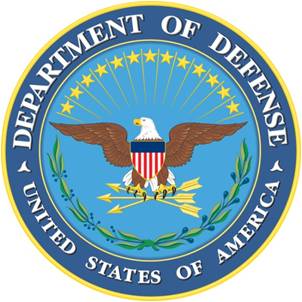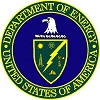Statements of Support from Federal Agencies
On July 29, 2016, the first anniversary of the National Strategic Computing Initiative, Federal agencies released a white paper describing the interagency vision for the emerging and innovative solutions needed to realize this grand challenge. The white paper, a collaboration by the Department of Energy, National Science Foundation, Department of Defense, National Institute of Standards and Technology, and Intelligence Community, describes the interagency technical priorities, highlights the challenges and opportunities associated with these priorities, and presents a guiding vision for the research and development needed to achieve key technical goals. By coordinating and collaborating across multiple levels of government, industry, academia, and nonprofit organizations, the nanotechnology and computer science communities can look beyond the decades-old approach to computing based on the von Neumann architecture and chart a new path that will continue the rapid pace of innovation beyond the next decade.
 Department of Defense (DoD): As the primary DoD Community of Interest (CoI) for nanoscale electronic devices and materials, the Advanced Electronics Community of Interest (AE CoI) has high interest in this grand challenge to produce revolutionary future computing solutions based on the convergence of innovative architectures and the exploitation of emerging nanotechnology-inspired electronic devices and materials. The AE CoI fully advocates for the grand challenge goal to inspire and create a unique, productive, and multi-disciplinary community that has high potential to advance and accelerate fundamental understanding, innovative and emerging technology options, and technology demonstrations. The AE CoI will be the lead for coordinating the DoD scientific and engineering community as it charts the most promising path forward.
Department of Defense (DoD): As the primary DoD Community of Interest (CoI) for nanoscale electronic devices and materials, the Advanced Electronics Community of Interest (AE CoI) has high interest in this grand challenge to produce revolutionary future computing solutions based on the convergence of innovative architectures and the exploitation of emerging nanotechnology-inspired electronic devices and materials. The AE CoI fully advocates for the grand challenge goal to inspire and create a unique, productive, and multi-disciplinary community that has high potential to advance and accelerate fundamental understanding, innovative and emerging technology options, and technology demonstrations. The AE CoI will be the lead for coordinating the DoD scientific and engineering community as it charts the most promising path forward.
 Defense Advanced Research Projects Agency (DARPA): DARPA has broad interests that strongly align with the goal of this challenge to develop transformational sensing and computational capabilities that consume little power. Much of the progress demonstrating that this goal is now achievable has resulted from recent DARPA programs, including SyNAPSE, UPSIDE, and STARnet (a public-private partnership with the Semiconductor Research Corporation). DARPA will continue to support research to break the status quo of digital processing and data analysis, and expects research in nanotechnology, computer science, and neuroscience to be key enablers of future programs.
Defense Advanced Research Projects Agency (DARPA): DARPA has broad interests that strongly align with the goal of this challenge to develop transformational sensing and computational capabilities that consume little power. Much of the progress demonstrating that this goal is now achievable has resulted from recent DARPA programs, including SyNAPSE, UPSIDE, and STARnet (a public-private partnership with the Semiconductor Research Corporation). DARPA will continue to support research to break the status quo of digital processing and data analysis, and expects research in nanotechnology, computer science, and neuroscience to be key enablers of future programs.
 Department of Energy (DOE): DOE’s Office of Science, through the Advanced Scientific Computing Research and Basic Energy Sciences program offices, is currently evaluating both advanced materials and scientific computing research opportunities to support development of a new paradigm for extreme and self-reconfigurable computing architectures that go beyond Moore's Law and mimic neuro-biological architectures. DOE is planning a series of events such as study groups and workshops to engage experts in neuromorphic computing, emerging computer architectures, and related materials science research topics to provide community input on potential new research opportunities in this area. DOE will hold its first event, an expert study group roundtable discussion, on October 29–30, 2015, with a larger workshop planned for the spring of 2016.
Department of Energy (DOE): DOE’s Office of Science, through the Advanced Scientific Computing Research and Basic Energy Sciences program offices, is currently evaluating both advanced materials and scientific computing research opportunities to support development of a new paradigm for extreme and self-reconfigurable computing architectures that go beyond Moore's Law and mimic neuro-biological architectures. DOE is planning a series of events such as study groups and workshops to engage experts in neuromorphic computing, emerging computer architectures, and related materials science research topics to provide community input on potential new research opportunities in this area. DOE will hold its first event, an expert study group roundtable discussion, on October 29–30, 2015, with a larger workshop planned for the spring of 2016.
 Intelligence Advanced Research Projects Activity (IARPA): The capabilities sought by this challenge are central to several IARPA research areas. In support of this challenge, IARPA is organizing a workshop planned for January 2016 to bring together leaders in the neuromorphic engineering community with leaders in the experimental, theoretical, and computational neuroscience communities to discuss strategies for leveraging the latest insights on neural computing to advance the capabilities of future neuromorphic systems. Attendees will discuss the strengths and limitations of today's neuromorphic hardware and software in the context of the latest data and approaches for revealing the structure and function of cortical and subcortical circuits. The workshop will conclude with identification of specific research projects that the attendees believe will be most useful for advancing the capabilities of neuromorphic computers. Details, as they become available, will be posted at www.iarpa.gov.
Intelligence Advanced Research Projects Activity (IARPA): The capabilities sought by this challenge are central to several IARPA research areas. In support of this challenge, IARPA is organizing a workshop planned for January 2016 to bring together leaders in the neuromorphic engineering community with leaders in the experimental, theoretical, and computational neuroscience communities to discuss strategies for leveraging the latest insights on neural computing to advance the capabilities of future neuromorphic systems. Attendees will discuss the strengths and limitations of today's neuromorphic hardware and software in the context of the latest data and approaches for revealing the structure and function of cortical and subcortical circuits. The workshop will conclude with identification of specific research projects that the attendees believe will be most useful for advancing the capabilities of neuromorphic computers. Details, as they become available, will be posted at www.iarpa.gov.
 National Institute of Standards and Technology (NIST): NIST has established several internal research programs in this area. The nanoscale electronic devices needed for such transformation computing systems present significant measurement challenges because they are highly nonlinear and are composed of exotic materials. NIST work in support of this challenge includes the development of electronic characterization methods, nanoscale imaging methods for physical and chemical structure, and structure-function relationships for artificial synapses. Many of these capabilities will be available to other participants through the NIST Center for Nanoscale Science and Technology user facility. Designers that seek to incorporate advanced materials and fabrication methods may also use tools and resources developed for the Materials Genome Initiative, including validated predictive models, materials databases, and advanced informatics approaches.
National Institute of Standards and Technology (NIST): NIST has established several internal research programs in this area. The nanoscale electronic devices needed for such transformation computing systems present significant measurement challenges because they are highly nonlinear and are composed of exotic materials. NIST work in support of this challenge includes the development of electronic characterization methods, nanoscale imaging methods for physical and chemical structure, and structure-function relationships for artificial synapses. Many of these capabilities will be available to other participants through the NIST Center for Nanoscale Science and Technology user facility. Designers that seek to incorporate advanced materials and fabrication methods may also use tools and resources developed for the Materials Genome Initiative, including validated predictive models, materials databases, and advanced informatics approaches.
 National Science Foundation (NSF): NSF will be exploring where the most exciting opportunities are and what transdisciplinary, collaborative research is needed from across NSF’s multiple directorates. The directorates for Engineering (ENG), Computer & Information Science & Engineering (CISE), Mathematical & Physical Sciences (MPS), and Biological Sciences (BIO) will conduct research to develop new concepts, devices architectures, and software to explore and eventually enable novel solutions for brain-like computing. Ongoing programs include Electronics, Photonics, and Magnetic Devices in ENG, Electronic and Photonic Materials in MPS, and Integrative Strategies for Understanding Neural and Cognitive Systems in CISE, ENG, and SBE. ENG and CISE will continue collaboration with the Semiconductor Research Corporation (SRC) in support of the Nanoelectronics Research initiative, which seeks to develop the next device that will propel computing beyond the limitations of current technology. Some of the problems associated with this challenge are highlighted in a 2015 report supported by NSF and sponsored by the Semiconductor Industry Association and SRC, Rebooting the IT Revolution.
National Science Foundation (NSF): NSF will be exploring where the most exciting opportunities are and what transdisciplinary, collaborative research is needed from across NSF’s multiple directorates. The directorates for Engineering (ENG), Computer & Information Science & Engineering (CISE), Mathematical & Physical Sciences (MPS), and Biological Sciences (BIO) will conduct research to develop new concepts, devices architectures, and software to explore and eventually enable novel solutions for brain-like computing. Ongoing programs include Electronics, Photonics, and Magnetic Devices in ENG, Electronic and Photonic Materials in MPS, and Integrative Strategies for Understanding Neural and Cognitive Systems in CISE, ENG, and SBE. ENG and CISE will continue collaboration with the Semiconductor Research Corporation (SRC) in support of the Nanoelectronics Research initiative, which seeks to develop the next device that will propel computing beyond the limitations of current technology. Some of the problems associated with this challenge are highlighted in a 2015 report supported by NSF and sponsored by the Semiconductor Industry Association and SRC, Rebooting the IT Revolution.
Read more about:
- Nanotechnology-Inspired Grand Challenges
- A Nanotechnology-Inspired Grand Challenge for Future Computing (Overview)
- A Federal Vision for Future Computing: A Nanotechnology-Inspired Grand Challenge (White Paper)
- Statements of support for this challenge from other organizations (CCC, Moore Foundation, IBM, IEEE, Kavli Foundation, SRC)
- Workshop reports and white papers relevant to this challenge
- Meetings and workshops relevant to this challenge
- Funding opportunities relevant to this challenge
- Frequently asked programmatic and technical questions about this challenge


